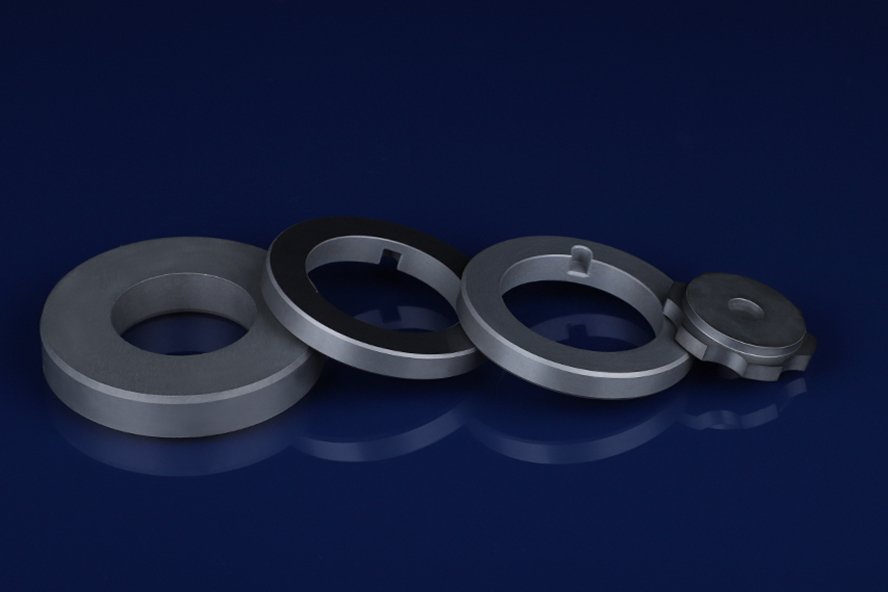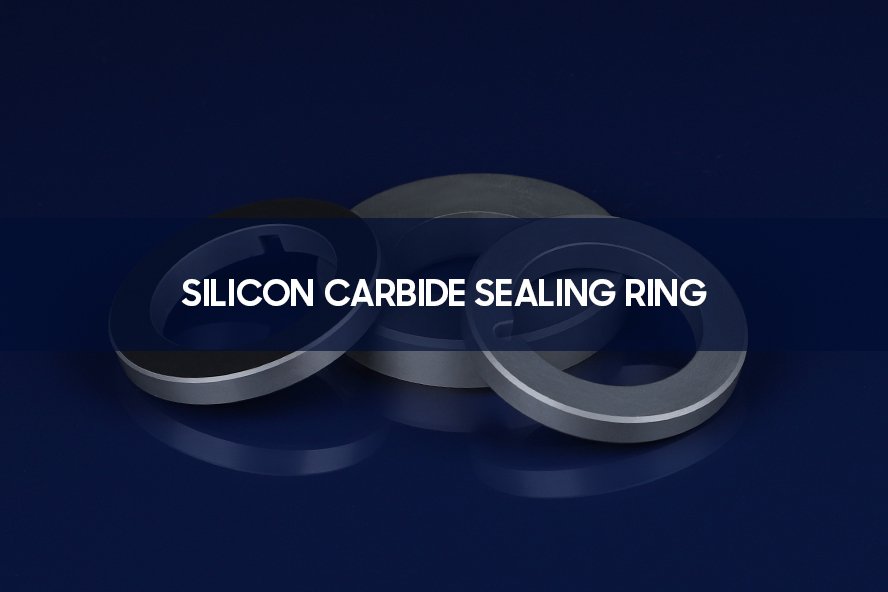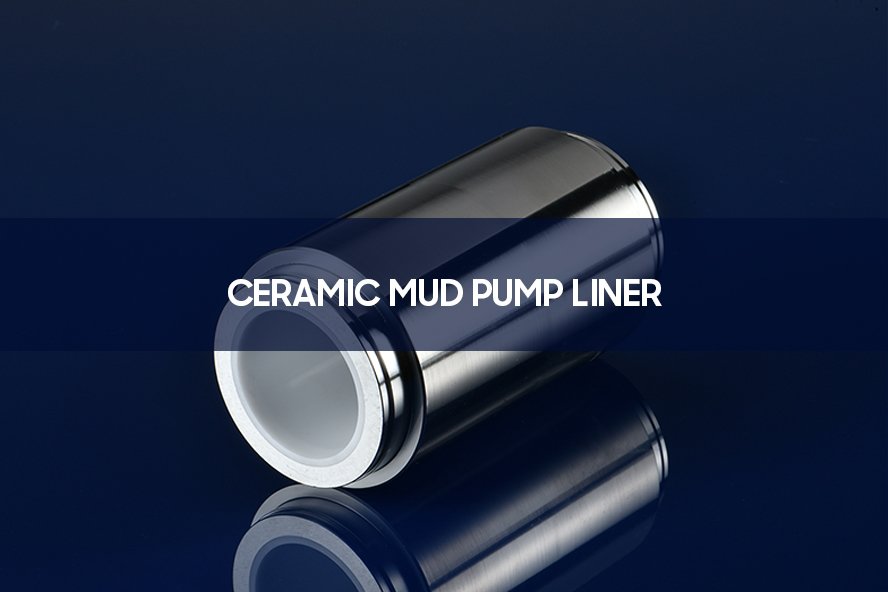Die Keramik von Gleitringdichtungen wird zweifellos in verschiedenen Industriezweigen hervorragend eingesetzt und trägt dazu bei, die Effizienz und Lebensdauer des Dichtungssystems zu verbessern. Aber wissen Sie, welche Materialien in Gleitringdichtungen verwendet werden und welche Vorteile sie haben? Im Folgenden werde ich die Eigenschaften und Anwendungen von keramischen Dichtungen eingehend analysieren, um Ihnen die Auswahl der richtigen Werkstoffe zu erleichtern (ob Sie ein Ingenieur, ein Lieferant oder ein Endverbraucher sind). Ich glaube, dieses Wissen kann Ihnen helfen

Was sind keramische Gleitringdichtungen?
Zu den Dichtungssystemen, die üblicherweise zur Verhinderung von Leckagen zwischen rotierenden und festen Bauteilen eingesetzt werden, gehören Dichtungskomponenten für Triebwerke in der Luft- und Raumfahrt, Pumpenkomponenten für medizinische Geräte und Dichtungssysteme für Zentrifugen. Diese fortschrittlichen keramischen Werkstoffe können ihre hervorragenden Eigenschaften nutzen, um Stabilität und Haltbarkeit in rauen Umgebungen zu gewährleisten
Gleitringdichtung Werkstoff Keramik

Aluminiumoxid (Al2O3): Aluminiumoxid-Keramik ist bekannt für seine Härte, Korrosionsbeständigkeit und thermische Stabilität und wird häufig für allgemeine Anwendungen eingesetzt.

Siliziumkarbid (SiC): Eine beliebte Wahl aufgrund seiner hohen Wärmeleitfähigkeit, geringen Wärmeausdehnung und hervorragenden Verschleiß- und Korrosionsbeständigkeit.

Zirkoniumoxid (ZrO2): Wird häufig wegen seiner Bruchzähigkeit, hohen Festigkeit und Temperaturwechselbeständigkeit verwendet.
In der Tat gibt es viele Arten von Gleitringdichtungskeramik, und die spezifische Wahl hängt immer noch vom Preis und der tatsächlichen Anwendung ab. Die drei oben genannten Materialien sind relativ gängige keramische Dichtungsmaterialien
Haupteigenschaften von Gleitringdichtungskeramiken
1. Härte und Verschleißfestigkeit
Gleitringdichtungskeramiken weisen eine außergewöhnliche Härte auf, die sich in einer hohen Verschleißfestigkeit niederschlägt. Dies macht sie ideal für abrasive Umgebungen und gewährleistet eine lange Lebensdauer.
2. Korrosionsbeständigkeit
Keramische Werkstoffe sind von Natur aus resistent gegen chemische Angriffe und eignen sich daher für Anwendungen mit aggressiven Chemikalien wie Säuren, Laugen und Lösungsmitteln.
3. Thermische Stabilität
Keramik behält seine strukturelle Integrität auch bei hohen Temperaturen, oft über 1.000°C. Diese Eigenschaft ist entscheidend für Anwendungen, bei denen es zu Temperaturschwankungen oder extremer Hitze kommt.
4. Geringe thermische Ausdehnung
Die geringe thermische Ausdehnung minimiert das Risiko thermischer Rissbildung und gewährleistet die Dimensionsstabilität während des Betriebs.
5. Leichtgewicht
Im Vergleich zu Metallen sind Keramiken leichter, was das Gesamtgewicht des Dichtungssystems reduziert und die Energieeffizienz verbessert.
Anwendungen
Pumpe und Kompressor
Anwendungsteile: Lager, Dichtungsringe und Gleitringe
Industrien: Petrochemie, Pharmazie, Lebensmittelverarbeitung, Wasseraufbereitung
Luft- und Raumfahrt
Anwendungsteile: Lager, Dichtungsringe und Gleitringe
Industrien: Petrochemie, Pharmazie, Lebensmittelverarbeitung, Wasseraufbereitung
Automobilbranche
Anwendungsteile: Wasserpumpe, Ölpumpe und Klimakompressor
Merkmale: Verbesserung der Lebensdauer von Komponenten und Verringerung des Wartungsbedarfs
Chemische Industrie
Anwendungsbereiche: Dichtungssysteme für Rührwerke, Reaktionsbehälter und Zentrifugen
Funktion: Beständig gegen Säure- und Laugenkorrosion, geeignet für raue chemische Umgebungen
Elektrizität und Energie
Anwendung: Dichtungskomponenten in Kernkraftwerken und Wärmekraftwerken
Merkmale: Hohe Festigkeit und antioxidative Kapazität, erfüllt die Anforderungen des Langzeitbetriebs
Medizinische Ausrüstung
Anwendungsbereich: Dichtungen für Blutpumpen und andere Präzisionsgeräte
Vorteile: Biokompatibilität und hohe Sauberkeit
Vorteile der Verwendung von Gleitringdichtungskeramik
- Sie kann die Leistung des Geräts verbessern und das Auftreten einiger Leckage-Ereignisse verringern.
- Es kann die Häufigkeit des Austauschs minimieren, da Keramik eine lange Lebensdauer hat.
- Kann Abfall und Verschmutzung der Umwelt reduzieren
- Kundenspezifische Anpassungen können für bestimmte Branchen vorgenommen werden, z. B. für komplexe geometrische Dichtungen.
Gemeinsame Herausforderungen und Lösungen
Problem der thermischen Rissbildung
Lösung: Verwenden Sie Materialien mit geringer Wärmeausdehnung und achten Sie auf eine geeignete Systemkonstruktion, um plötzliche Wärmeschocks zu vermeiden.
Chemische Abbauprobleme
Lösung: Wählen Sie Keramik mit bewährter chemischer Beständigkeit, wie Siliziumkarbid oder Aluminiumoxid.
